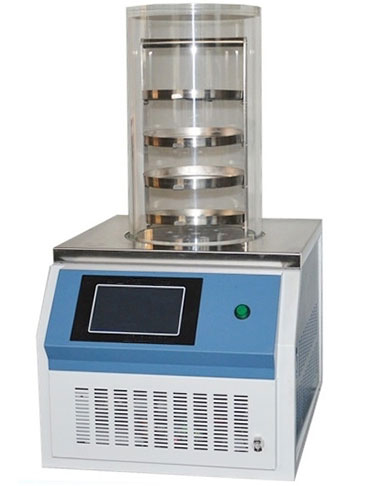How to Maintain the Dryer?
Before the dryer enters normal work, there will be a period of adaptation (run-in period, generally 3 days). This period is to ensure that the dryer can work normally during the formal production process and minimize the number of dryers. The probability of an accident, the correct operation during the adaptation period can prolong the service life of the dryer, so we must pay attention to the details of each operation during this period.
- Before the start of the adaptation period, the operator of the Dryer should receive strict training from the manufacturer on the structure, operation, different performance, and resolution of daily problems of the dryer, and be familiar with the manual of dryer.
- During the adaptation period, it should be noted that it is necessary to check the lubrication, cooling, braking, etc. of the dryer from time to time, and also check whether the sealing of each part of the dryer that needs to be sealed is intact.Dryer equipment must be kept clean, prevent loosening of various parts, and reduce wear or parts loss caused by loosening. This is very important for maintaining the dryer.
The proficiency of the operator on the dryer will also affect the dryer when operating the dryer. The trained personnel should follow the instructions to operate and maintain; ensure that the working load of the dryer does not exceed the rated 80%. In addition, the workload should be suitable so that the dryer cannot cause overheating due to prolonged operation. For example, after the adaptation period of ATO’s Ordinary/Gland Type Vacuum Freeze Dryer Machine is over, the dryer equipment should be forced to maintain, inspect each equipment and all required replacement work; the dryer equipment should be kept clean, Each component prevents loosening and reduces wear or parts loss caused by loosening.

Anti-corrosion
For dryers that often handle corrosive materials, we must do a good job of anti-corrosion work. Anti-corrosion work is also a very critical step for maintaining the dryer. Generally, the dryer is composed of a flat plate, a cylinder and a welded part. The anti-corrosion methods of the dryer for different parts and different purposes are also different. The commonly used anti-corrosion methods mainly include the following three:
- Electrostatic powder spraying method. The electrostatic powder spraying method is a method of applying a new type of powder coating to the cylinder of the dryer. Many manufacturers use the old-fashioned method of spraying liquid paint on the cylinder of the dryer, but these liquid paints contain a large number of organic solvents such as esters, ketones and hydrocarbons, which are flammable, explosive and very unsafe. It causes a lot of trouble for production, construction, storage and transportation, and this kind of liquid is usually toxic, and after volatilizing into the air, it will cause serious pollution to the environment. When we manufacture our dryers, we usually use cold-rolled stainless steel. The cost of this kind of steel is very high, and it cannot have superior corrosion resistance when replaced with ordinary carbon steel. The corrosion resistance of the powder coating used in electrostatic powder spraying is completely comparable to that of stainless steel. We can use ordinary carbon steel instead of stainless steel. Moreover, this kind of powder coating has the characteristics of toughness, durability, good decoration, outdoor weather resistance and heat resistance, at the same time, it has industrial dryer corrosion resistance and chalking resistance, gloss and color light performance, completely It can replace the dryer made of stainless steel, greatly reducing the cost.
- Use austenitic nickel-chromium stainless steel for welding. There are many parts of the dryer that must be welded, and the materials used in the old-fashioned welding often appear cracks and corrosion. The impact on the life of the dryer is extremely serious. The difference between austenitic nickel-chromium stainless steel and ordinary carbon steel lies in its poor thermal conductivity, large expansion coefficient during heating, and high electrical resistance. These characteristics limit the use of special methods when welding this material. However, the corrosion resistance of this steel is extremely high.
- Passivation and phosphating method. In the manufacturing and production of dryers, many parts are made of carbon steel. If the working time is long, it is easy to cause a lot of rust on the surface, and a lot of manual rust removal work is often required. Passivation and phosphating methods are mainly through electrical and electrochemical reactions. Through a one-time treatment, the surface of the rust-grown iron and steel workpiece can show the original color of the metal, and at the same time, a dense anti-rust film layer is formed on the metal surface. After using this method, even if we put the equipment in a humid environment, it will not cause rust. Moreover, this method is extremely simple, can save a lot of manpower and material resources, reduce investment, and is the most widely used anti-corrosion method.
Fault checking
If you want to maintain the dryer, you need to check and judge the failure of the dryer as much as possible to combine theory and practice, and use visual, auditory, and olfactory tests to analyze:
- Use visual judgment. The so-called visual judgment is to observe the changes in the readings of the various meters of the dryer, the conditions of each connecting part, the leakage of each joint sealing surface, whether there are abnormalities in the oil and water, and the heating of the motor.
- Use auditory judgment. The so-called use of auditory judgment is to listen to whether the sound emitted by the components of the dryer is normal, and if there is an abnormal phenomenon, it is necessary to determine the source of the abnormal sound.
- Use smell to judge. The so-called olfactory judgment is to use the nose to smell the various parts of the dryer and the oil at the parts for abnormal odors.

